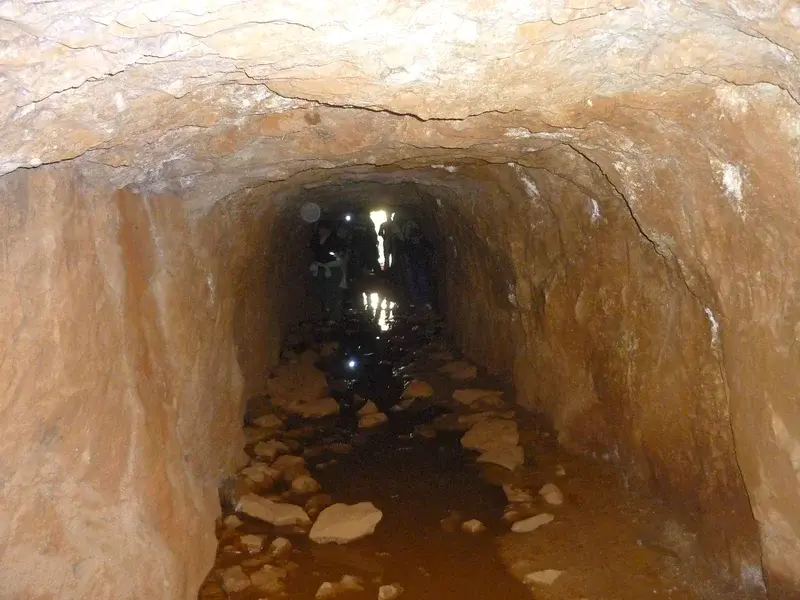
Old mine trails
by Antonio Jordán, University of Seville, Sevilla, Spain
El Cerro del Hierro (The Iron Mountain) is a karst area near Sevilla (SW Spain) which was exploited for extraction of iron minerals since Roman times until the 1980s. It has been declared a natural monument for its geological and landscape value. The old mining town still exists, though with a very low population. The area is connected by rail with the port of Seville, where the ore was shipped. In this mine extracted iron bars that limit the facades of the Royal Tobacco Factory (University of Seville) or the structure of Isabel II Bridge (Puente de Triana) on the Guadalquivir were forged.
The mineral resources of the Cerro del Hierro have been exploited since antiquity, both open pit and depth, since Roman times. In the late nineteenth century the Company of El Pedroso conducted mineral exploration drilling in the Cerro del Hierro, however made no extraction. In 1893 , the mines were exploited by the Scottish William Baird Mining and Co. Ltd., from Glasgow , which operated between 1895 and the first half of 20th century as The Baird's Mining Co. Ltd. In the current town of Cerro del Hierro, vestiges of English architecture may still be found, together with the church and the engineers' houses (called the "Houses of the English"). In 1865, the railway connected the area with the Mérida-Seville line. Between 1895 and 1932, production was 7.63 million tonnes. Mining activities stopped during the Spanish Civil War, but was it started again later. The exploitation passed to Spanish hands (Nueva Montaña Quijano company), which extracted 2 millions tonnes between 1946 and 1966. Finally, in the 1970s, the Cerro del Hierro SA society exploited the area beterrn 1972 and 1977.
Categories
Location
- Europe (3893)
- Southern Europe (1691)
- Spain (819)
- Exact location (-5.6168 W, 37.9530 N)
Tag
Colours
Image properties
3128 × 2346 px;
image/jpeg; 1.4 MB
Camera:
Panasonic DMC-FS3
Taken on 19
March
2009
Submitted on 26 January 2014
Licence
Creative Commons Attribution 3.0 Unported (CC BY 3.0)
Credit
Antonio Jordán (distributed via imaggeo.egu.eu)
Share
Appreciate
Report